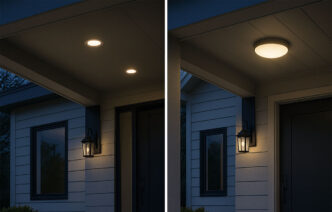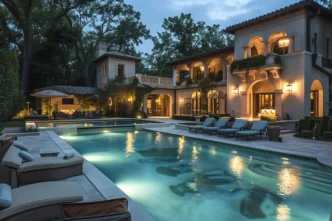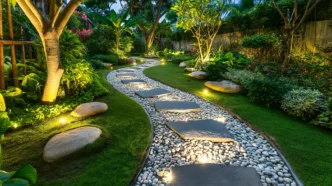Table of Contents: Recessed Lighting vs. Flush Mount
- What Is Recessed Lighting?
- What Is Flush Mount Lighting?
- Recessed Lighting vs. Flush Mount: Comparison Chart
- Recessed Lighting vs. Flush Mount: Pick the Right Light for Your Landscape
- FAQs for Recessed Lighting vs. Flush Mount
Recessed lighting vs. flush mount lighting can make all the difference in your outdoor space, creating anything from a subtle glow to a dramatic effect. Two popular choices homeowners often compare are these versatile fixture styles.
Both offer sleek, functional designs, but they serve different purposes depending on your outdoor setup. Let’s break down the strengths of each style to help you make the best choice for your landscape.
What Is Recessed Lighting?
Recessed lighting is installed directly into surfaces, so the light source sits flush with the ground, ceiling, or wall. This type of lighting is perfect for a clean, modern look where fixtures remain mostly hidden from view.
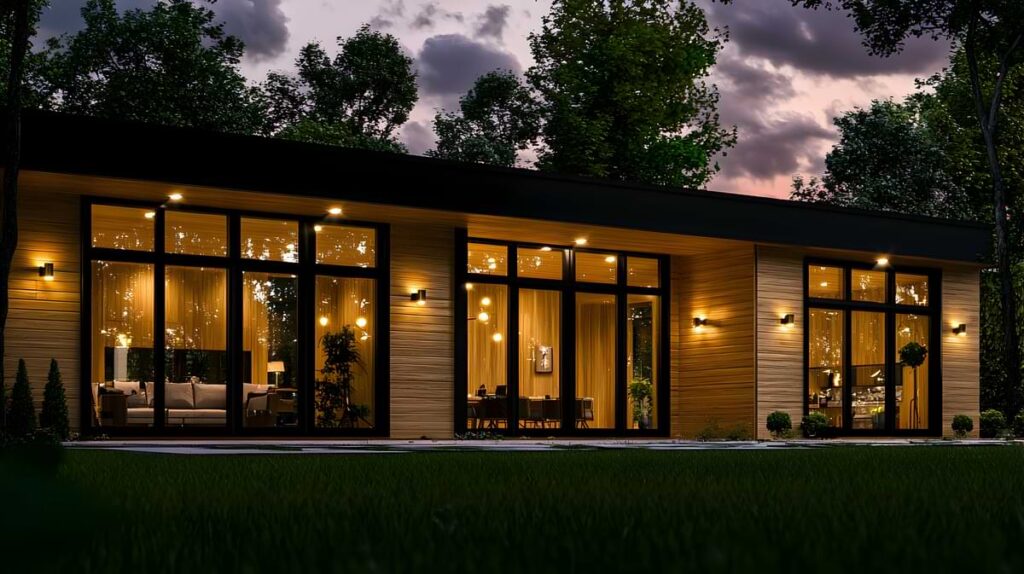
Benefits of recessed lighting include:
- Low Profile Design: Blends seamlessly into patios, decks, or walkways.
- Safety Lighting: Ideal for stairs, steps, and pool areas where you need illumination without bulky fixtures.
- Directional Control: Can highlight plants, structures, or pathways while avoiding glare.
- Durability: Often sealed against the elements, making them highly weather-resistant.
What Is Flush Mount Lighting?
Flush mount lighting fixtures sit directly against a surface, but unlike recessed lights, the fixture itself is visible. They’re versatile and available in many styles, making them a good match for both functional and decorative outdoor lighting needs.
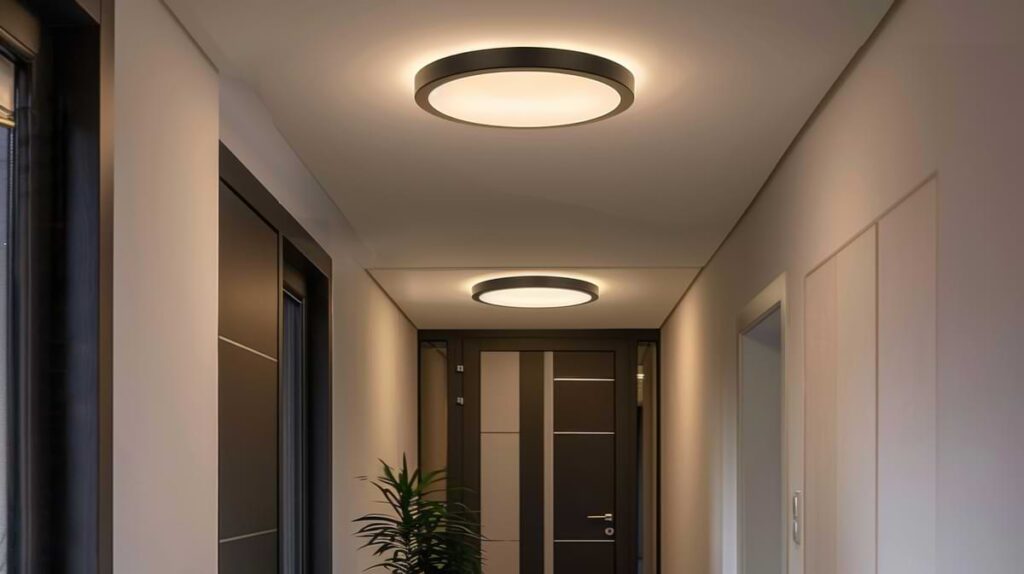
Benefits of flush mount lighting include:
- Decorative Appeal: Adds visual interest with fixture shapes and finishes.
- Wide Coverage: Casts light across larger areas, like patios or covered porches.
- Easy Installation: Typically requires less structural modification than recessed lights.
- Fixture Variety: Available in modern, rustic, and traditional designs to complement your landscape style.
Recessed Lighting vs. Flush Mount: Comparison Chart
Choosing between recessed and flush mount lighting often comes down to personal preference, installation requirements, and the atmosphere you want to create.
Use this chart to compare the two:
| Feature | Recessed Lighting | Flush Mount Lighting |
| Design | Hidden, minimal, modern | Visible, decorative, versatile |
| Installation | Requires cutting into surface | Mounted directly, simpler to install |
| Light Direction | Focused, directional | Broad, ambient |
| Best For | Steps, walkways, accent features | Patios, entryways, porches |
| Maintenance | Slightly more complex to replace | Easier to access and maintain |
| Style Options | Subtle, sleek look only | Wide range of styles and finishes |
How to Choose the Right Option
Before deciding, think about the role your lights will play in your outdoor space.
- Safety First: If your priority is keeping steps, paths, or pool edges visible at night, recessed lighting may be your best choice.
- Style Impact: If you want your lights to double as design features, flush mounts can enhance your space with added character.
- Installation Considerations: For new builds or major renovations, recessed lighting integrates seamlessly. For quicker upgrades, flush mounts are more practical.
Recessed Lighting vs. Flush Mount: Pick the Right Light for Your Landscape
Both recessed lighting and flush mount lighting can elevate your outdoor space—it just depends on your goals. Recessed lights are subtle, functional, and great for guiding movement safely, while flush mounts bring style, visibility, and flexibility to outdoor entertaining areas.
By weighing aesthetics, functionality, and installation, you can choose the perfect fixture type to highlight your landscape beautifully.
FAQs for Recessed Lighting vs. Flush Mount
No, recessed lights sit inside surfaces for a low-profile, hidden look, while flush mounts attach directly to surfaces and are fully visible, often serving both functional and decorative purposes.
Recessed lights can be more challenging to install and maintain since they require cutting into surfaces and accessing wiring inside walls, ceilings, or decks. They also provide more focused light, which may not cover large areas.
Yes, in most cases a flush mount can replace a recessed light, but you may need to patch or modify the existing cutout and ensure the new fixture is compatible with the wiring and mounting surface.
Join our Insider list and check out the different lighting options that we have to offer.
